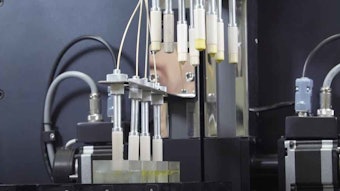Pigments are important in personal care products but vital in the creation of cosmetics. Foundation specifically is a challenge in terms of pigment selection since there are innumerable skin tones around the world. Although the formulator may have a tough time determining the right amount of pigment, the consumer, perhaps, has it tougher trying to choose a foundation that suits them.
The Hewlett-Packard Company (HP), known for its computer, printer and digital imaging technology, is using what it knows about pigments and applying it to color cosmetics, specifically foundation. The company recently announced it has created a mobile imaging technology to assist consumers in choosing the correct shade of foundation—via a camera phone.
Nina Bhatti, PhD, principal scientist at HP labs, headed the project, which was initiated by a customer need. “You do not typically think HP would be focused on the world of cosmetics, but one of our customers is in the field of cosmetics and was looking for something that appealed to a younger demographic,” said Bhatti. She therefore developed a technology offering women a mobile beauty advisor to assist them in selecting foundation.
The Technology
The color match technology, still in prototype, uses sophisticated imaging algorithms and mobile networking to match colors, explained Bhatti. The process begins with the consumer snapping an image of their face next to the company’s color palette display at the store. The consumer then sends the image to the HP system, which searches through a database of skin colors to locate a perfect match.
Bhatti explained that by snapping the image of the consumer’s face next to the color palette in the store, the technology accounts for that particular camera’s interpretation of color of both their face and the color palette; thus the system can more accurately match a foundation to the face. Although this process may seem simple, it is the technology on HP’s side that allows the system to find the perfect foundation.
“We needed a system that color-corrects images for a true color comparison space. Our system constructs a matrix based on the image and remaps the image with the correct colors,” said Bhatti. The algorithms locate the face in the image first, according to Bhatti; then it selects the good color on the face, throwing out any shadows or sheen.
The system takes those skin values that are left and compares them to many samples of skin in a database to find what Bhatti refers to as “the color sister or who looks just like [the consumer] in colorspace.” The database accounts for uneven pigmented skin or freckles. “We actually literally compare the distribution of the skin value.”
Low resolution phones can prove to be somewhat of a problem since they essentially “smear” imperfections and average them over a larger area of skin; however they can still help to choose a more appropriate shade of foundation.
HP Labs involved color cosmetic experts as well in the creation of its color match technology thus using information from the experts to recommend a beneficial foundation.
Results
HP Labs wanted to genuinely mimick the knowledge, eye and expertise of color experts with its technology. Therefore, it compared the results chosen from its database with several color cosmetic experts’ choices in tests. “The color match technology performed as well, if not better than, the color cosmetic experts,” said Bhatti. “The experts were even off by a shade at times when the technology was right on,” she added.
The company also tested the technology with five different brands of cosmetics and reported the technology gave the same results as if the consumer had seen a makeup artist.
Future Uses
The technology can be tailored to other arenas of personal care, according to Bhatti. Within color cosmetics, it can choose lipstick or eye shadow based on skin color. It can also be tailored to choose an appropriate hair color. The company is also looking into applications in fashion and home decorating.
“If people have an oddly colored item in their house, [HP] could match that color and then involve decorating experts to recommend wall colors or other furniture for that space,” added Bhatti. In fashion, the technology could be used to recommend clothing based on skin tone. Either way, the company feels as though there are many possibilities for the technology and hopes to make future announcements in regards to other uses.










